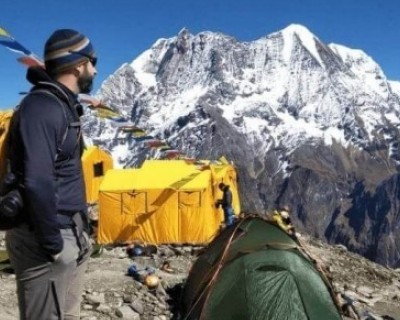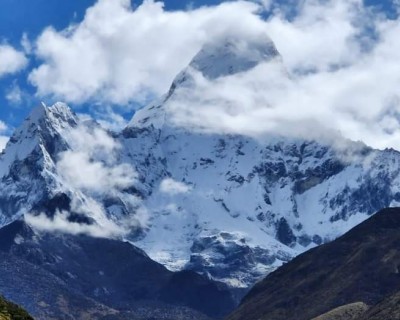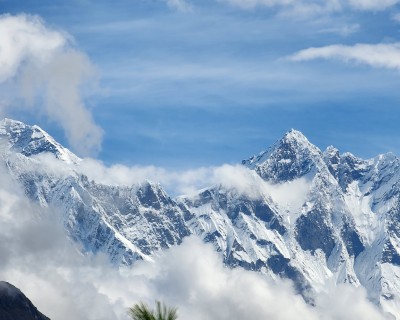In this article, we put some of the questions like how to get into hiking, and answered them for you.
What to wear for hiking?
What to wear for hiking is an important consideration. First, you should be clear about how many nights you are going for and what is the weather going to be like, update. The right clothing can lead to a safe and comfortable experience while the wrong one can lead to a struggling, uncomfortable, and dangerous one.
Keep in mind, for a day hike you don’t need much to pack, just some comfortable shoes and a backpack to carry water, some snacks, layers, and sun protection.
For two or more days of hiking, you need to carry some cooking and camping equipment for the best experience.
Note: avoid thick gears like a heavy coat, instead carry multiple layers that you can add or remove with the temperature changes. Remember to carry some rain jackets and pants if you are planning to hike in the mountains.
What kind of shoes should I wear for hiking?
To determine what kind of shoes you need for hiking you need to consider how much weight you plan to carry.
Choosing the shoes for hiking depends on your personal preference, some people aren’t comfortable wearing heavy hiking boots. For many years, we can see that hikers and trekkers wore ankle-high boots, but this habit has changed dramatically in a few years. Low-top hiking shoes are considered as safe and more comfortable and protect your feet from rocks and rough ground surfaces.
For a day hike, hiking shoes are best as you will not carry a heavy backpack. For two to more days hiking, you can wear mid-boot or full boots, these will help you to support your ankle. For a long day hike or trek, waterproof boots are good as the trail can be tough, or bad weather, they will support your feet and easy to walk carrying a heavy backpack.
What clothes should I wear for hiking?
Clothing depends upon on season you are planning to hike. You should be updated about the weather and temperature. For a short day hiking near around, it's best to dress in a layer, that you can adjust with the temperature.
If you are hiking in a deserted area then you need to have cotton layers because it holds moisture and is best to have directly against your skin.
Hiking in the mountains, you need to have a thermal layer, a waterproof layer to protect you from rain and wind. carry some warm clothes in the pretty lightweight. Go with wool and fiber clothes for beautiful memories.
What about socks, do I need to buy some special ones?
For hiking, you don’t need special hiking socks, but the good ones can make your experience a bit enjoyable, they help to keep your feet dry and comfortable.
Do I need to carry hiking gaiters?
Gaiters are specially used to fit your pants or cover your legs to protect your lower legs from pesky plants like cactus, and nettles. If you are hiking with low-top hiking shoes, then we recommend you get a pair of leg gaiter. Hiking in the mountain region or high snow-level you better carry a pair of long gaiter.
What should I look for in a backpack? Do I need to buy one with a special feature?
Umm, talking about the backpack, you will find a wide option for a backpack, where many companies create a wide range of sizes, and colors and each has its features. If you are looking for quality backpacks then you can try from major companies like North Face, Gregory, Black Diamond, and so on. Choose the one you find handy.
What size backpack should I look for?
We are talking about short-day hiking, so the size of your backpack depends upon your day of hiking, you’ll need much smaller for a day hiking than for multiple-day hiking. In general, most of the day packs range from 20 liters to 35 liters. The small backpack is great for a day of hiking you can include snacks, water, and lunch. The larger backpacks are good for long hikes, in this, you can include layers, extra water, a first-aid kit, supplies, and a few others.
Where can I buy gear for hiking?
Coming to choose the hiking gear, you can find your required gear while exploring Kathmandu (capital city) in all models and featured in local outdoor shops. Another option is to browse the internet. You can check out the gear with its quality and reviews and get an order or you can ask Nepal Hiking Trek to guide you with your required gear.
Do I need a map and compass for the hiking?
Carrying a map is good for hiking, whether it’s digital or paper. If you plan to have a paper map then carry a compass as well, it plays an important role here. Hiking with a digital map in your phone, a GPS device, or an emergency communication device, then remember to carry backup power such as a solar charger, and extra batteries.
When to use trekking poles?
For long hiking, we recommend our hikers use trekking poles cause they are very helpful in taking pressure and good impact on your back, knees, and ankles. They are very helpful to balance in rough and technical terrain, in a day of hiking, we don’t fully recommend you to carry trekking poles. If you are trekking on rough terrains, it's good to have a trekking pole on the trails that challenge you.
What should I include in my first-aid Box?
We recommend you include the below-mentioned things in your first-aid kit.
- Medical tape
- Gauze pads in a different size
- Antibacterial ointment
- Antiseptic wipes
- Bandages
- Insect sting treatment
- Tweezers
- Safety pins
- Blister treatment
- Anti-inflammatory and pain relief medicine
- Non-stock pads
- Antihistamine for allergic reaction
- Multi-tools
What if I get lost while hiking?
The chances of getting lost on a day hike are very low. How about the chances of danger? The danger of getting lost on a day hike feels like you may not have the required gear or food to spend one or more nights in the wilderness. So if you find that you’ve lost your way you should stay calm and follow the correct protocols to get home safely.
Don’t panic first, otherwise, you will find yourself in more danger so try to relax. If you have a map or navigation device, try to use it, as it may make sense of where you might be, use a compass map, and look for the landmarks to determine the direction. If you hear the sound of a flowing river, walk along with it, it will take you back to civilization.
So don’t panic, take a deep breath, and think wisely to be out of it.
Hope this article answers all your confusion about hiking. If you want to learn more about short hiking around the Kathmandu Valley, backpack guiding tips, and other hiking vacations, please visit our website or connect with us: at [email protected].
Thank you!

.jpg)






